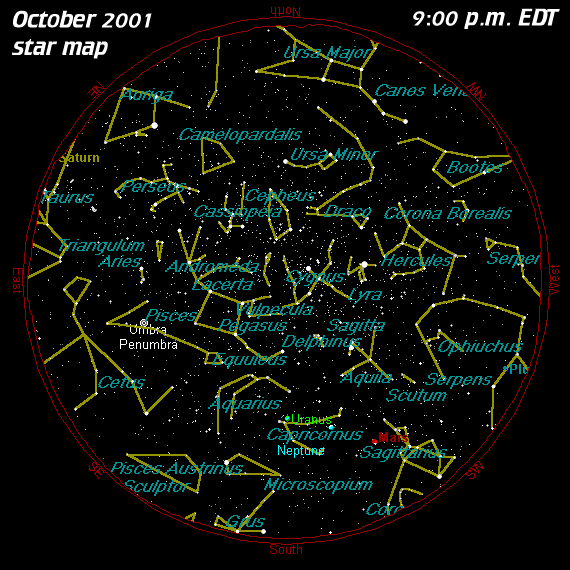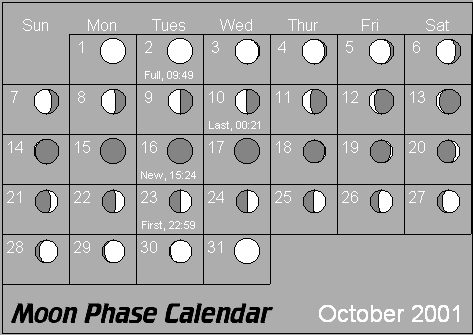

OCTOBER 2001


OCTOBER 2001
![[Venus at dusk]](01-01-venus.jpg) |
| VENUS AT DUSK: This image of Venus was recorded with a 24mm lens on Fujifilm 800 Press around mid-January of this year. Note how the glow of a nearby sodium vapor streetlight adds an orangey cast to the snow covered ground. Gary A. Becker photo... |
![[Orionid Meteor Radiant]](orionids-01.gif) |
 |
 |